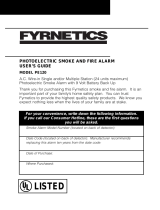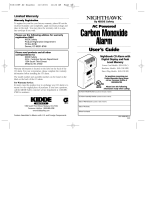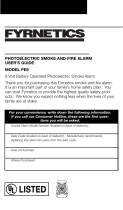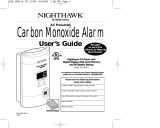NFPA 72 states: Life safety from fire in residential occupancies is
based primarily on early notification to occupants of the need to
escape, followed by the appropriate egress actions by those
occupants. Fire warning systems for dwelling units are capable of
protecting about half of the occupants in potentially fatal fires.
Victims are often intimate with the fire, too old or young, or
physically or mentally impaired such that they cannot escape
even when warned early enough that escape should be possible.
For these people, other strategies such as protection-in-place or
assisted escape or rescue are necessary.
• Smoke alarms are devices that can provide early warning of
possible fires at a reasonable cost; however, alarms have
sensing limitations. Ionization sensing alarms may detect
invisible fire particles (associated with fast flaming fires) sooner
than photoelectric alarms. Photoelectric sensing alarms may
detect visible fire particles (associated with slow smoldering
fires) sooner than ionization alarms. Home fires develop in
different ways and are often unpredictable. For maximum
protection, Kidde recommends that both Ionization and
Photoelectric alarms be installed.
• A battery powered alarm must have a battery of the specified
type, in good condition and installed properly.
• Smoke alarms must be tested regularly to make sure the
batteries and the alarm circuits are in good operating
condition.
• Smoke alarms cannot provide an alarm if smoke does not
reach the alarm. Therefore, smoke alarms may not sense fires
starting in chimneys, walls, on roofs, on the other side of a
closed door or on a different floor.
• If the alarm is located outside the bedroom or on a different
floor, it may not wake up a sound sleeper.
• The use of alcohol or drugs may also impair one’s ability to hear
the smoke alarm. For maximum protection, a smoke alarm
should be installed in each sleeping area on every level of a
home.
• Although smoke alarms can help save lives by providing an
early warning of a fire, they are not a substitute for an
insurance policy. Home owners and renters should have
adequate insurance to protect their lives and property.
Features and General Information
5

























